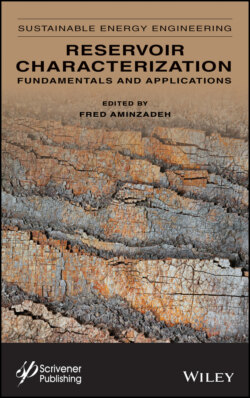Читать книгу Reservoir Characterization - Группа авторов - Страница 25
1.6 More on Reservoir Characterization and Reservoir Modeling for Reservoir Simulation
ОглавлениеNo discussion on reservoir characterization is complete without understanding rock properties and the corresponding rock physics. Furthermore, reservoir modeling could be considered as the last step for reservoir characterization during different stages of the life of the reservoir. Indeed, ideally, any reservoir simulation and could use reservoir models based on static and dynamic reservoir characterization to improve the process. 4D seismic data can help with the reservoir model updating process, thus enabling creation of a dynamic reservoir model.
Figure 1.8 shows how a static reservoir model with the associated structural earth model and corresponding geologic and reservoir properties such as facies, porosities, and vshale among other parameters can be a starting point (top left). Through reservoir simulation a flow model can be created at different time points, with the respective information about pressure, saturation and temperature. Output of the reservoir simulation model and the earth model could be used to generate (invert for) the reservoir rock physics properties such as density, compressional and shear wave velocities at different time periods. Such information can then be used to generate the synthetic 4D seismic data. Comparison of the synthetic and field 4D seismic data will then lead to an updated Earth model. The process continuous until we establish a good match between real and simulated seismic and reservoir flow models leading to an acceptable dynamic reservoir characterization results from the accurately derived rock physics properties as well as other reservoir properties such as porosity, permeability, oil and gas saturation, and pressure among other properties.
Figure 1.8 The entire process of reservoir model updating through 4D seismic modeling and reservoir simulation, (from Meadows, [11]).
In what follows we describe rock physics and reservoir modeling briefly.
